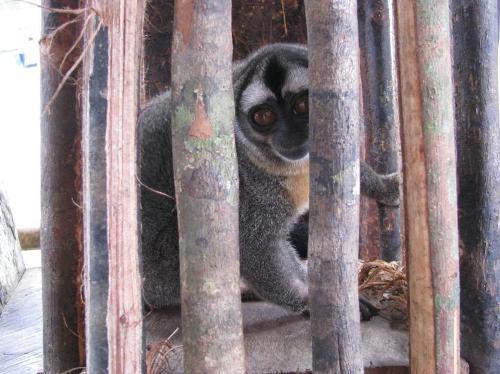Angela Maria Maldonado Rodriguez
Other projects
21 Jan 2004
The Woolly Monkey Project: Status and Conservation of Primates in Amacayacu National Park (Amazonas Department, Colombia) - A Community-Based Project
26 Apr 2012
Enhancing Environmental Law Enforcement and Conservation Awareness at the Colombian-Peruvian Border using the Night Monkeys as Flagship Species
20 Feb 2015
The Aotus Project: Enhancing Environmental Law Enforcement and Conservation Awareness at the Colombian-Peruvian Border Using the Night Monkeys as Flagship Species
28 Nov 2017
Bi-National Strategy for the Conservation of the Genus Aotus at the Colombian – Peruvian Border
This project aims to assess the conservation status of overharvested species in the Amazonian frontier between Colombia and Peru. We aim to tackle the illegal trade of night monkeys for biomedical research, throughout the implementation of locally-based management initiatives.

Wildlife trade is recognised as a major threat to biodiversity. In the Peruvian-Colombian border area illegal trade of night monkeys is providing a significant income for a reduced number of intermediaries, while indigenous collectors have access to less than 10% of the total revenues (Maldonado et al, 2009). Deforestation and trade of other mammal and plant species were recorded during our pilot project. Using night monkeys as a flagship species for habitat conservation, following our successful experience with the woolly monkeys, it is likely that our aim in documenting illegal trade on wildlife will have an impact at the ecosystem level. Our research also indicated the presence of 3 species of night monkeys (Aotus vociferans, A. nancymaae and A. nigriceps), in areas where they have not been reported before. We urge to establish the species’ precise geographic distribution and whether or not they show allopatric or sympatric distribution.
Our preliminary results have been widely distributed. National and international media are putting pressure on the Colombian environmental authorities who have neglected the magnitude of this trade for over 25 years. This project will continue with the identification of perverse incentives originating from laws governing resources use, as well as with the search for developing viable alternative livelihoods.
Our approach encourages interdisciplinary cooperation regarding the management of biodiversity components, including in-situ conservation, community based research, environmental policies revision and the feasibility analyses of a sustainable economic alternative. This has been the base of the design of our long-term conservation aim: achieving a management strategy of natural resources involving different and local levels decision-making.
This conservation project aims to:
Transfer monitoring methods implemented by Colombian Tikunas to their neighbouring Peruvian communities subject to intense extraction of wildlife.
Maintain the census and harvest database for the hunting-target species recorded by local co-investigators.
Submit quantitative data on the harvest of wildlife to the Colombian and Peruvian authorities in order to enforce international wildlife trade regulations.